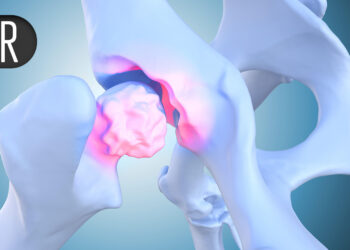ANAHEIM, Calif. — The tiny patient, just 2 months old, was brought into the emergency department for difficulty breathing and problem feeding. Over the next weeks and months, the pediatric hospitalists at her hospital would need to identify and manage a trio of cardiac issues and decisions.
- Was it heart failure or cardiac dysfunction?
- When her weight dipped lower, the management of malnutrition was crucial.
- When an alarm blared in the middle of the night, was it arrhythmia or artifact?
Three pediatric hospitalists addressed all these issues at a recent Pediatric Hospital Medicine (PHM) 2025 session titled “Close Encounters of the Cardiac Kind.”
Heart Failure or Cardiac Dysfunction?
When the patient arrived, she was breathing faster than normal and had been progressively tired and sweaty when feeding. Her temperature was 97.7 °F, with pulse of 175, respiration 70, blood pressure 85/40 and oxygen of 100% on room air.

On physical exam, she was pale and nontoxic with clear breath sound and mild subcostal retractions, said Michelle Essig, MD, a pediatric hospitalist at Children’s Hospital Los Angeles and clinical associate professor of pediatrics at the Keck School of Medicine of USC, both in Los Angeles.
She was tachycardic with 3/6 holosystolic murmur.
Essig’s question for the attendees: Was it heart failure or cardiac dysfunction?
Heart failure, she said, “is defined as the inability to meet the metabolic demands of the body and the organs,” whereas “dysfunction is a mechanical abnormality.”
She reminded attendees: “Not all patients with cardiac dysfunction are in heart failure and vice versa.”
Impaired cardiac function signs and symptoms include fussiness, poor appetite, vomiting, tachycardia, hypotension, cardiomegaly and poor growth.
If signs and symptoms point to left-side heart failure, symptoms and signs may include tachypnea, feeding difficulty and respiratory distress. In right-sided, look for hepatomegaly and puffy eye lids .
For evaluation, Essig recommended troponins, electrolytes-complete metabolic panel, B-type natriuretic peptide (BNP), chest x-ray, ECG and an echo.
Lab results showed unconjugated hyperbilirubinemia, transaminase elevated, BNP at 1000, blood urea nitrogen 20, creatinine 2, elevated troponins, blood pressure 60/40, while heart rate remained 170s.
The echo showed an atrioventricular canal (AVC) defect.
Moving on to the management, Essig said: “It’s important to know — what are your resources?”
For instance, how readily available is cardiology — in house or phone calls? It’s crucial to know the timing to get you resources, she said, such as transport time, time needed to get specialists onboard, availability of a cardiothoracic or pediatric ICU.
Initial treatment often includes intravenous loop diuretic, inotropes if low blood pressure or poor perfusion. To reduce metabolic demand, she recommended nothing by mouth, support breathing, fever reduction.
“You want to be able to improve the myocardial function as much as we can,” Essig said.
Take-homes: “I think a big one is recognition,” Essig said. “Having a high suspicion for heart failure is needed. A lot of the symptoms are common ones we see all the time.”
“Patients with ventricular dysfunction may look OK at rest,” she said. But when metabolic demands increase, “they can decompensate pretty quicky.”
Managing Malnutrition in Cardiac Patients
Fast forward 1 month, with the same patient now 3 months old and an inpatient admitted for poor weight gain and a diagnosis of a complete AVC. The birth was full-term, but the infant had been prenatally diagnosed with congenital heart disease (CHD) and confirmed with AVC following birth.
To optimize nutrition, she said, hospitalists need to know:
- What’s the feeding duration? This infant took a half hour to eat two ounces or less.
- What’s the feeding efficiency? This patient was dribbling formula and breathing more quickly while eating.
- What’s the feeding frequency and longest stretch between feeds? The infant was often sleeping through feedings and needed to be awakened.
- What’s the feeding tolerance? Infant is spitting up four to six times a day, but small amounts.
Infants with CHD have higher caloric need. Namrata Ahuja, MD, director of the Pediatric Fellowship Program, Division of Hospital Medicine and assistant professor of clinical pediatrics, at the Keck School of Medicine, said that need is as much as 30% or more higher.
Their faster respirations and heart rate make their baseline state “like they are running,” she said. Decreased stamina leads to poor coordination with feeding. Baseline hypoxia leads to tiring quickly. Her solution: a 20-minute time limit for feeding and a nasogastric tube.
She also worked with the cardiologists to optimize the cardiac medications, and the child was kept in the hospital to gain weight while awaiting surgical repair.
Arrhythmia or Artifact?
After the same child gains weight, a surgical biventricular repair is done.
But all does not remain calm.
On a following evening, monitors are alarming for an arrhythmia.

But is it an arrhythmia or an artifact?
Sarah White, MD, a pediatric hospitalist at Children’s Hospital Los Angeles and clinical associate professor of pediatrics, provided a step-wise approach to distinguish between the two.
First, she advised, look at the patient.
Next, look at the rhythm.
“Can you find the QRS’s embedded in the rhythm strip?” Yes? If so, the next question: “Is the rate regular?” It’s crucial to pay special attention to the beginning and end of the rhythm, she said.
If the rate is regular, the conclusion is: artifact.
When trying to identify artifact, he suggested asking three questions:
- Is the “arrhythmia” only in one lead?
- Can you find a QRS embedded in the rhythm?
- Does the rate remain unchanged, particularly at the beginning and end of the arrhythmia?
If all answers are yes, it points to artifact, she said.
Valuable Take Aways and Reminders

While the topics covered are well-known by pediatric hospitalists, the tips, such as the methodology to distinguish artifacts from arrhythmias, were very helpful, said David L. Hill, MD, a pediatric hospitalist at Wayne UNC Healthcare-Goldsboro, who attended.
“The single most valuable takeaway for me was the methodology of distinguishing between artifacts on an EKG and a true arrhythmia,” he said. That tip, he said, will mean “I am going to bother my cardiologist significantly less.”
The question is not rare, he added. In the last year, he’s had to decide between the two at least five times, he said.
Source link : https://www.medscape.com/viewarticle/pediatric-hospitalists-difference-between-heart-failure-and-2025a1000lan?src=rss
Author :
Publish date : 2025-08-12 07:45:00
Copyright for syndicated content belongs to the linked Source.














